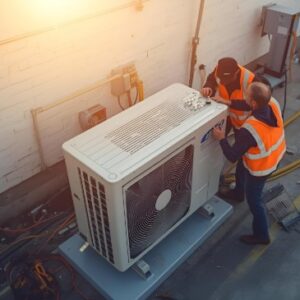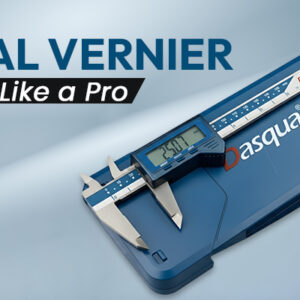Selecting the right tooling is one of the most important decisions for achieving accuracy, efficiency, and longevity in CNC machining. Among the most widely used options in shops today, Cat40 Tool Holders stand out for their strength, stability, and compatibility with a variety of machines. However, not all holders are created equal, and choosing the best ones for your needs requires a clear understanding of performance factors, applications, and build quality.
This guide breaks down the essential considerations to help you select the most reliable Cat40 Tool Holders for your CNC operations.
What Are Cat40 Tool Holders?
Cat40 Tool Holders are a type of V-flange taper holder commonly used in milling and machining centers. The “40” refers to the taper size, which determines rigidity and compatibility with the machine spindle. Known for their balance of strength and versatility, Cat40 holders support a wide range of cutting tools and operations, from roughing to precision finishing.
Their popularity comes from their ability to withstand high speeds, maintain stability under load, and deliver consistent performance in production environments. Understanding how these holders function is the first step toward making the right choice.
Why Choosing the Right Cat40 Tool Holders Matters
Having the right tool holder may seem like a small detail, but it directly affects:
- Surface finish quality
- Dimensional accuracy
- Cutting tool life
- Machine spindle performance
- Overall productivity and cost efficiency
Poor-quality or mismatched holders can lead to chatter, runout, vibration, and premature tool wear. By choosing well-designed and properly balanced Cat40 Tool Holders, machinists can optimize their setup and improve long-term reliability.
Key Factors to Consider When Choosing Cat40 Tool Holders
1. Holder Type and Application
Cat40 holders come in a variety of styles, each suited to different machining requirements:
ER Collet Holders – Ideal for versatility and gripping small to medium-sized tools.
End Mill Holders – Provide maximum rigidity for heavy cuts and larger tools.
Shell Mill Holders – Best for face milling and aggressive material removal.
Shrink Fit Holders – Offer high precision and excellent balance for high-speed machining.
Hydraulic Holders – Known for accuracy and reduced vibration in finishing applications.
Match the holder style to the application to ensure the best performance and tool longevity.
2. Material and Build Quality
Tool holder performance starts with the material. High-quality Cat40 holders are typically made from:
- Alloy steel
- Heat-treated or case-hardened materials
- Precision-ground surfaces
A well-manufactured holder maintains taper accuracy, resists wear, and protects the spindle. Choosing holders from reputable manufacturers helps ensure consistency and reliability.
3. Taper Accuracy and Runout
Low runout is critical for tight tolerances and extended tool life. When evaluating Cat40 Tool Holders, consider:
- Taper tolerance
- Concentricity
- Balancing specifications
Look for holders designed to meet or exceed industry standards. Precision-ground tapers typically offer better performance and reduce vibration during high-speed operations.
4. Balancing and High-Speed Capability
For shops that run high RPMs, tool holder balance becomes essential. Poorly balanced holders can cause:
- Spindle wear
- Chatter and vibration
- Reduced surface quality
- Premature tool failure
Seek Cat40 holders that are pre-balanced or capable of being balanced as needed. If your machining often involves high-speed finishing or aluminum work, this factor should be a top priority.
5. Pull Stud (Retention Knob) Compatibility
Even the best Cat40 holders will underperform if paired with the wrong retention knob. Always confirm:
- The pull stud matches your machine model
- Material quality meets safety standards
- The stud is torqued to manufacturer specifications
- Improper studs can lead to tool pullout, spindle damage, or safety hazards.
6. Coolant-Through Capability
Coolant-through tool holders improve machining by:
- Reducing heat
- Extending tool life
- Enhancing chip evacuation
- Supporting faster speeds and feeds
If your CNC machine supports through-spindle coolant, choosing Cat40 holders with coolant-through options can significantly boost productivity.
7. Maintenance Requirements
To ensure long service life, consider holders that are easy to clean, resistant to corrosion, and designed for secure tool clamping. Regular inspection of taper wear, collet condition, and clamping strength is essential, and choosing durable tool holders reduces maintenance frequency and replacement costs.
Tips for Getting the Most from Your Cat40 Tool Holders
- Keep tapers clean and free of debris. Even small contaminants can affect accuracy.
- Use high-quality collets and retention knobs. Low-cost components lead to runout and instability.
- Store holders properly. Protect them from corrosion and physical damage.
- Balance tools when needed. Especially important for high-speed milling.
- Inspect regularly. Replace worn or damaged holders promptly to protect your spindle.
Final Thoughts
Choosing the best Cat40 Tool Holders comes down to understanding your machining requirements and finding the right balance of precision, durability, and performance. Whether your workflow involves heavy roughing, high-speed finishing, or a mix of operations, reliable and well-designed tool holders help deliver consistent accuracy and longer tool life. The right tooling not only boosts productivity but also supports smoother machining, reduces vibration, and improves overall CNC efficiency.
Enhance your CNC results with high-quality Cat40 Tool Holders. Discover precision-focused options from Centaur Precision Tools, Inc.





